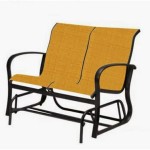How To Measure Vertical Blinds for a Patio Door: A Comprehensive Guide
Accurate measurements are paramount to ensure a proper fit and functionality of vertical blinds for a patio door. Ill-fitting blinds not only compromise the aesthetic appeal of the space but can also be difficult to operate and may not provide adequate light control and privacy. This comprehensive guide outlines the steps involved in accurately measuring for vertical blinds intended for a patio door, addressing considerations for inside and outside mounts, as well as potential obstructions and variations in patio door frames.
Before commencing any measurements, it is essential to gather the necessary tools. These include a steel measuring tape (cloth tapes are prone to stretching and are not recommended), a pencil for marking measurements, a notepad to record the measurements, and a step ladder if the patio door is particularly tall. Accuracy to the nearest eighth of an inch is highly recommended for optimal results.
Determining the Mounting Style: Inside vs. Outside
The first crucial decision is to determine whether the blinds will be mounted inside the frame (inside mount) or outside the frame (outside mount). This decision is influenced by several factors, including the depth of the patio door frame, the presence of obstructions, and the desired aesthetic.
An inside mount positions the vertical blinds within the recess of the patio door frame. This creates a cleaner, more integrated look. However, it requires sufficient depth within the frame to accommodate the headrail and the vanes of the blinds when they are open. Typically, a minimum depth of 2-3 inches is required, but it's critical to verify the specific requirements of the chosen blind model. If the frame depth is insufficient, an inside mount is not feasible.
An outside mount positions the vertical blinds on the wall or trim surrounding the patio door frame. This is a more versatile option, suitable when the frame depth is inadequate for an inside mount or when there are obstructions within the frame, such as window cranks or handles. Outside mounts can also make the window appear larger. It is important to consider the overlap required on either side of the door and at the top to ensure proper light control and privacy. This overlap typically ranges from 2 to 4 inches on each side.
Measuring for an Inside Mount
Measuring for an inside mount requires precise measurements to ensure the blinds fit snugly within the frame. The following steps outline the process:
1. Measure the Width: Measure the width of the opening at the top, middle, and bottom of the frame. Record the narrowest of these three measurements. This is the width that should be provided when ordering the blinds. The manufacturer will typically deduct a small amount (usually 1/4 to 1/2 inch) to ensure the blinds operate smoothly within the frame.
2. Measure the Height: Measure the height of the opening on the left, center, and right sides of the frame. Record the shortest of these three measurements. This is the height that should be provided when ordering the blinds. Again, the manufacturer might make minor adjustments to account for clearance.
3. Check for Obstructions: Inspect the inside of the frame for any obstructions, such as window cranks, handles, or security sensors. Account for these obstructions when measuring the depth of the frame. Ensure that the blinds will clear these obstructions when fully opened and closed.
4. Verify Frame Squareness: While measuring, observe if the frame is perfectly square. If the width or height measurements vary significantly from one point to another, it might indicate that the frame is out of square. This can affect the fit of the blinds and may require adjustments during installation.
5. Consider Light Gap: With inside mounts, a small light gap is often unavoidable along the edges of the blinds. This is due to the slight deduction made by the manufacturer to ensure smooth operation. If complete light blockage is critical, consider an outside mount instead.
Measuring for an Outside Mount
Measuring for an outside mount allows for greater flexibility in terms of light control and aesthetic preferences. The following steps outline the process:
1. Determine Desired Overlap: Decide how much the blinds should overlap the frame on each side and at the top. A typical overlap is 2 to 4 inches on each side, and at least 2 inches at the top. The overlap provides better light control and privacy by preventing light from seeping around the edges of the blinds.
2. Measure the Width: Measure the width of the patio door frame, including any trim. Add the desired overlap to each side of the frame. For example, if the frame is 72 inches wide and a 3-inch overlap is desired on each side, the total width should be 72 + 3 + 3 = 78 inches. This is the width that should be provided when ordering the blinds.
3. Measure the Height: Measure the height of the patio door frame, including any trim. Add the desired overlap to the top of the frame. For example, if the frame is 80 inches high and a 2-inch overlap is desired at the top, the total height should be 80 + 2 = 82 inches. This is the height that should be provided when ordering the blinds. The height measurement should extend to where the bottom of the blinds will hang. Consider the finished floor and ensure the bottom of the blinds will not drag.
4. Account for Obstructions: When measuring for an outside mount, it is still important to consider any obstructions, such as light fixtures or wall protrusions. Ensure that the blinds will clear these obstructions when fully opened and closed. If necessary, adjust the width or height measurements to accommodate the obstructions.
5. Consider Mounting Surface: Assess the mounting surface above the patio door. Ensure that the surface is strong enough to support the weight of the blinds and that it is suitable for drilling or screwing into. If necessary, use wall anchors or other appropriate fasteners to secure the blinds.
Additional Considerations for Patio Door Blinds
Beyond the core measurements, several additional factors should be considered to ensure the optimal selection and installation of vertical blinds for a patio door.
1. Vane Size and Material: Vertical blind vanes are available in various sizes and materials. Wider vanes generally offer better light control and privacy, while narrower vanes can create a more subtle look. Common materials include PVC, fabric, and wood. PVC vanes are durable and easy to clean, while fabric vanes offer a softer, more textured appearance. Wood vanes provide a classic, elegant look but are more expensive and require more maintenance.
2. Control Options: Vertical blinds are typically operated by a wand or a cord. Wand controls are generally safer for homes with children and pets, as they eliminate the risk of entanglement. Cord controls offer more precise control over the position of the vanes. Consider the ease of use and safety aspects when choosing the control option.
3. Track System: The quality of the track system is crucial for the smooth and reliable operation of vertical blinds. Look for a track system made of durable materials, such as aluminum or steel, with smooth-gliding carriers. A high-quality track system will ensure that the blinds open and close effortlessly and will last for many years.
4. Light Control Needs: Evaluate the light control needs for the patio door. If complete darkness is desired, consider blackout vanes. If filtering light and maintaining privacy are the primary concerns, light-filtering vanes may be more suitable. The choice of vane material and opacity will significantly impact the amount of light that enters the room.
5. Aesthetics and Style: Choose vertical blinds that complement the overall aesthetic of the room. Consider the color, pattern, and texture of the vanes. Vertical blinds are available in a wide range of styles, from simple and minimalist to ornate and decorative. Select a style that reflects the personal taste and enhances the décor of the space.
6. Professional Installation: While it is possible to install vertical blinds yourself, professional installation is often recommended, especially for large or complex patio doors. Professional installers have the experience and expertise to ensure that the blinds are properly installed and that they operate smoothly. They can also address any potential issues or challenges that may arise during the installation process.
By carefully following these steps and considering these additional factors, one can accurately measure for vertical blinds for a patio door and ensure a perfect fit and optimal performance. Accurate measurements are the foundation for a successful installation, leading to enhanced light control, privacy, and aesthetic appeal within the home.

Measuring Instructions For Vertical Blinds In Sliding Patio Doors
How To Measure For Vertical Blinds Justblinds

How To Install Blinds Window Shades For Windows Doors

Learn How To Measure For Vertical Blinds Com

How To Measure Vertical Blinds Hd Supply

Measuring Guide For Vertical Blinds Bali And Shades

How To Measure Doors For Blinds And Shades Selectblinds Com

Jacquard Vertical Blinds Sheer Blackout Shades For Sliding Glass Or Patio Doors Window Fabric Curtain Custom Made Model Ds6

How To Measure Windows For Blinds Direct

Made To Measure Vertical Blinds Great Prices








